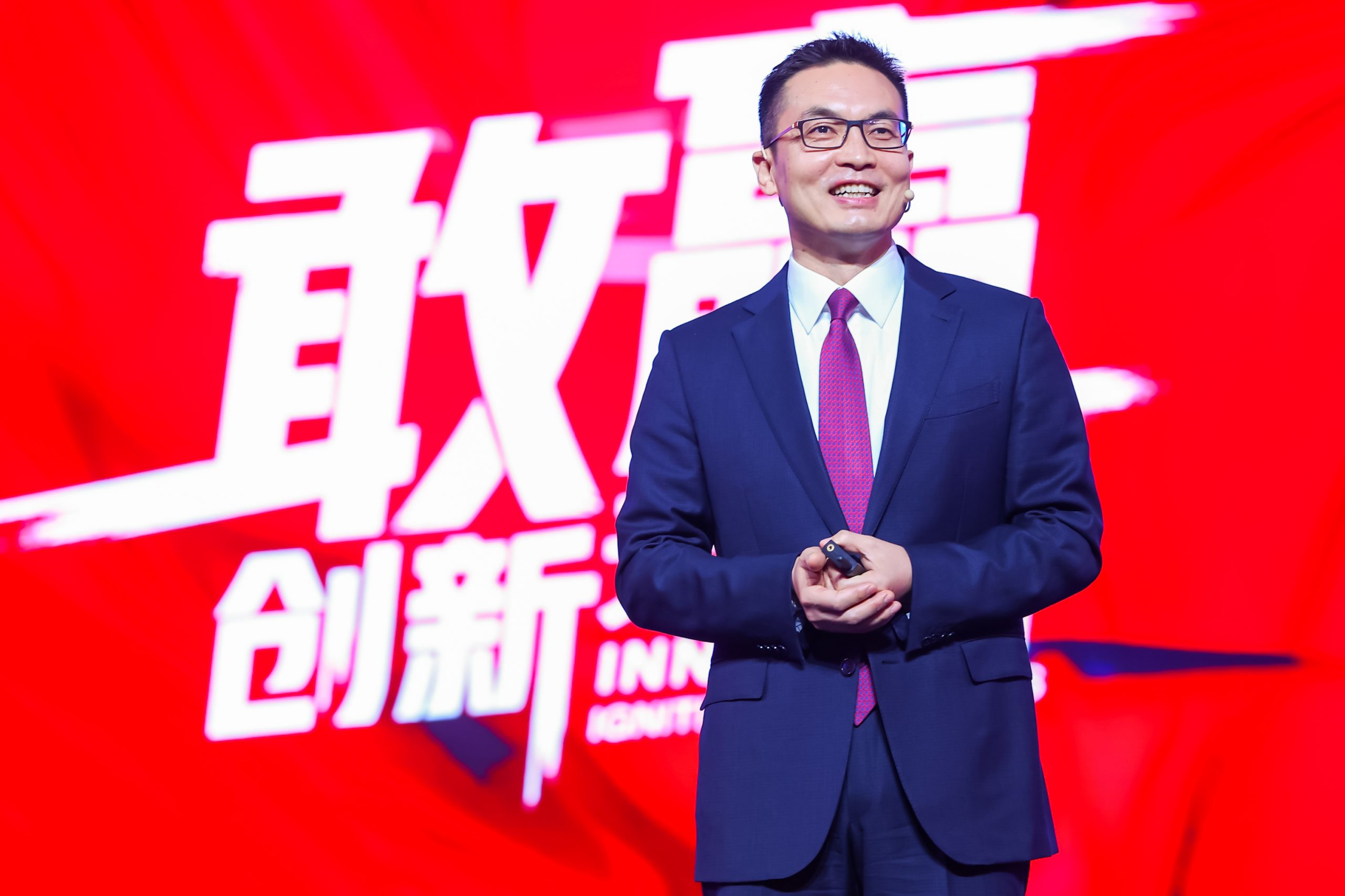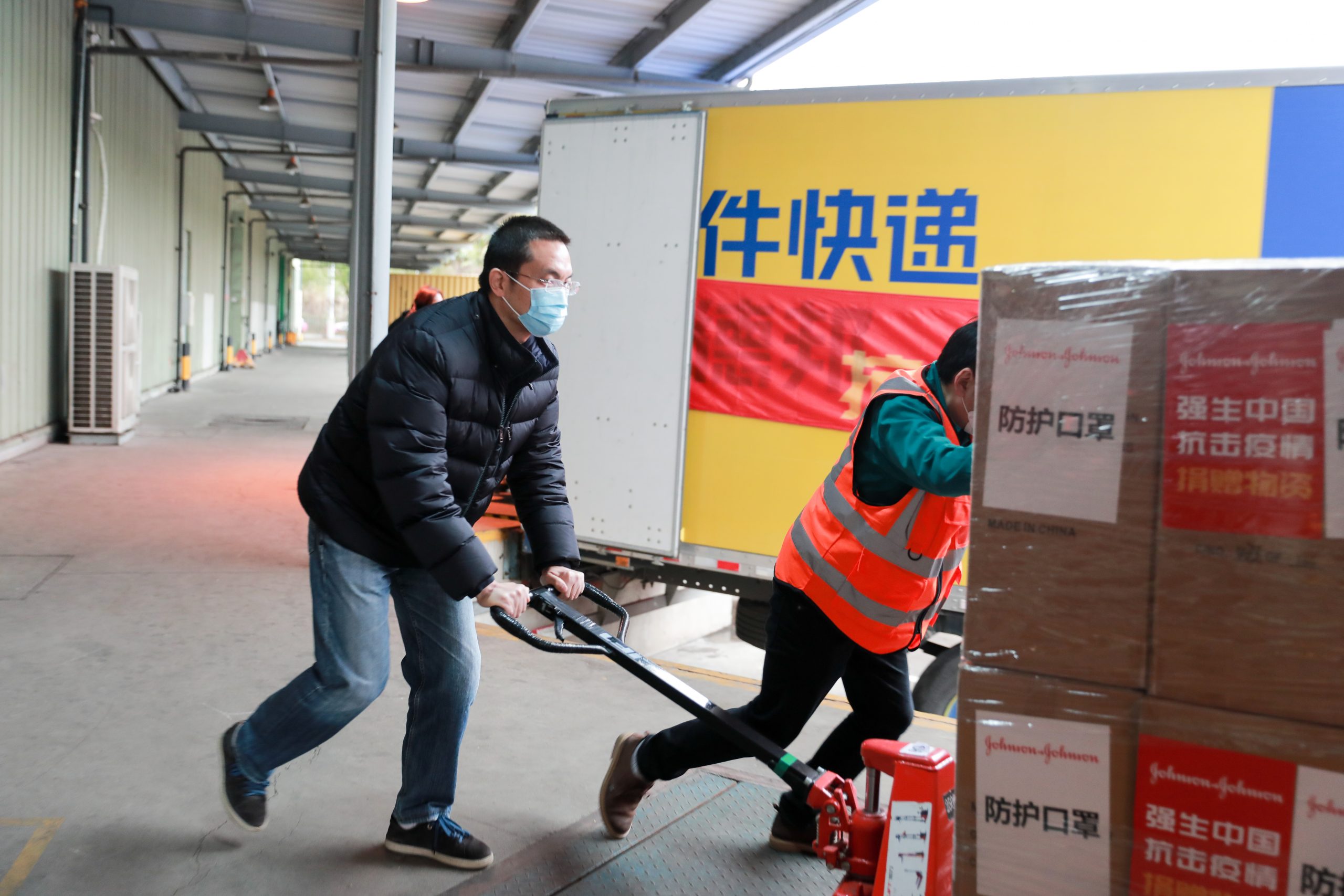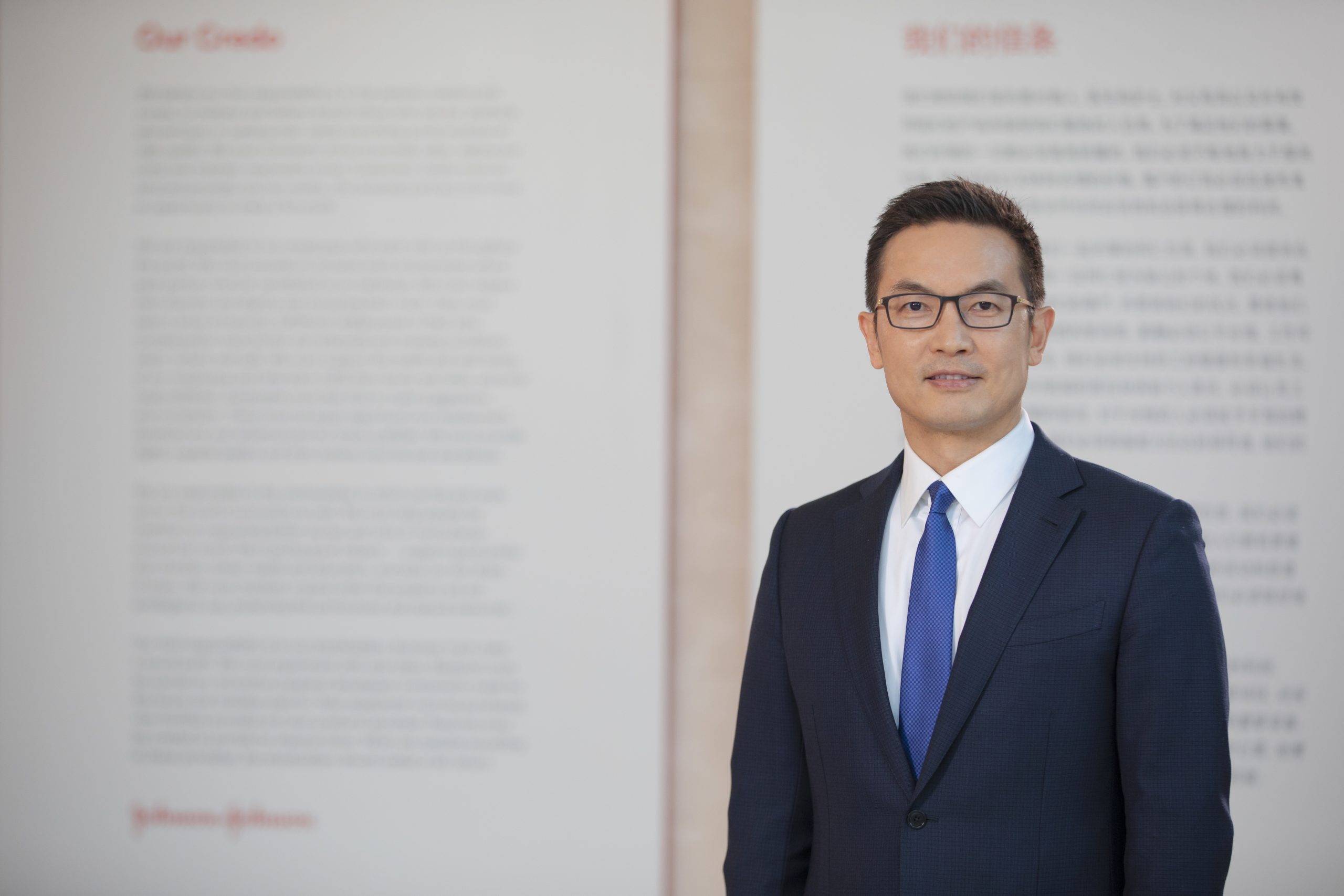AmCham China sat down with Will Song, Global Senior Vice President and China Chairman for Johnson & Johnson, to reflect on the last year, take stock of the company’s strategies and priorities in China, and look at the path forward.
Johnson & Johnson’s (J&J) remarkable efforts to develop an effective COVID-19 vaccine are well known. The company, working at unprecedented speed in collaboration with government authorities, medical institutions, and industry partners, managed to develop the first effective single-shot vaccine, which has been authorized by the US FDA for emergency use, granted conditional marketing authorization by the European Commission, as well as emergency use listing by the World Health Organization. The world has looked on with astonishment and relief, as J&J defied expectations by achieving in just over a year what would typically require a decade of research and development.
Perhaps less widely known and appreciated is J&J’s response to the localized COVID-19 crisis in Wuhan and other parts of China in the earliest days of this pandemic. Shortly after the COVID-19 outbreak, Johnson & Johnson leveraged global and local resources as well as partners around the globe to quickly donate cash, medical devices, medicines, consumer products, and protective medical supplies, with a total value of more than RMB 30 million, to support frontline healthcare professionals as well as local communities in Hubei, Shanghai, and other impacted areas in China.
Focusing also on their 11,000+ employees in China, J&J worked to ensure that all employees had PPE and implemented new protection protocols. This, says J&J’s China Chairman Will Song, “helped to ensure employee safety and to ensure that we kept operations of our sites running smoothly so that we could continue to deliver our product supply to customers and patients who were relying on us.”
The value of collaboration
Song notes that “since the early days of the pandemic, J&J realized that bringing an end to the pandemic is not something that can be done by one company – public and private sectors must work together. Our collaborations with various partners allow us to be even more ambitious in our goals of keeping as many people around the world as safe as we possibly can.”
In China alone, J&J has worked with government organizations at different levels, the Red Cross Foundation, the China Biodiversity Conservation and Green Development Foundation, as well as many local distributors, logistic companies, and volunteers to deliver their products and medical supplies to impacted areas. As early as January 23, J&J had donated RMB 1 million for pandemic relief through the China Red Cross Foundation. The medical supplies were delivered directly to 18 local hospitals in Hubei province to support frontline work. Since then, globally, J&J has committed a total of $300 million through partnerships with a number of international organizations to support frontline health workers in the global fight against COVID-19.
Reflecting on challenges and opportunities
Song pointed out that one of the challenges they have faced during the pandemic is travel restrictions that have prevented patients from travelling away from their homes for medical treatment. For Song, an important takeaway “is a critical need to bring more of J&J’s innovative products to next tier cities to serve more patients, and to better support professional education for healthcare workers in these areas in order to expand access and address unmet needs.”
The silver lining of this experience, J&J explained, has been that the pandemic has accelerated digital transformation in work and life. “All our businesses have built up capabilities to better serve patients and consumers in this new norm,” says Song. J&J’s pharmaceutical business is exploring an e-hospital model so patients can access medical services online, their medical devices sector is accelerating in digital surgery to make surgeries safer and more effective, and their consumer health business is embracing livestreaming and other new trends to engage with consumers. The idea, says Song, is that “all these efforts will enable us to make China a global driver for digital innovation.”
Another positive outcome, according to Song, is a new-found agility. He explains, “In its response to the pandemic, J&J’s Executive Committee and its Global Crisis Management team responded swiftly and was able to reallocate and direct resources appropriately. Retaining this flexibility and ability for rapid response will serve us well in the future.”
J&J also showed adaptability in response to the cessation of non-critical surgical procedures. Realizing the potential impact of this on the ability of healthcare professionals to continue to learn and improve their skills on important procedures, they developed an online platform where more than 70 public hospitals in China broadcast more than 6,000 surgeries that were watched by doctors from 12,000 hospitals across the country over a few months’ time.
In a larger sense, explains Song, “COVID-19 has driven us to intensify our efforts to combat health crises around the world, to support frontline healthcare workers, and in China particularly, to bring our products to next tier cities and support doctors and nurses there to build up professional capabilities.”
Thriving through crisis
J&J has had a presence in China for 36 years. China is now one of its key markets and is critical to the company’s overall growth. Even in the midst of the global economic downturn prompted by the pandemic, J&J’s business in China has registered positive growth over the last year across all of their businesses. Their medical services achieved double-digit growth in the second and third quarters in 2020, leading the race in the global market and becoming the 2nd largest market for J&J’s medical devices business around the world. J&J’s surgical vision sector registered strong growth in 2020 and now ranks No.1 in the China market share.
J&J notes that the growth they saw in the last year “would not have been possible without the Chinese government’s successful control of the pandemic, which enabled the nation’s quick economic recovery.” J&J’s overall success in China, says Song, has been driven by a number of factors. With a population of 1.4 billion and an aging demographic and rising middle class, the market is asking for more and more high-quality, innovative healthcare products and services. Song adds that “we’re also seeing positive signals from policy makers. The 14th five-year plan suggests that the government is striving to optimize the business environment for MNCs, deepen healthcare reform, and accelerate medical devices and drug approval to improve access and affordability for Chinese patients.”
The path forward: innovation, innovation, innovation
J&J describes China as their “growth + innovation” dual engine. On top of the fast growth in the market, the company is increasing its investment in local innovation, through support for local R&D capabilities, high-end manufacturing, end-to-end supply chain optimization, and collaborating with external partners to build an open innovation ecosystem.
The first priority, says Song, is to accelerate the introduction of cutting-edge healthcare products and solutions to China and expand their business in next tier cities. The company has introduced 62 innovative medicines, 52 of which have entered China’s national reimbursement drug list.
In 2019 alone, J&J launched operations at a new manufacturing plant for medical devices in Suzhou, as well as a new plant for pharmaceuticals in Xi’an. The company has collaborated with local government, medical institutions, and start-ups to advance innovations through their Asia Pacific Innovation Center, China Lung Cancer Initiative, and JLABS @ Shanghai, Johnson & Johnson’s largest incubator around the world. These platforms, explained Song, allow them to identify promising technologies at all stages of development and helps translate these ideas into solutions for patients and consumers.
So far, J&J’s investments have paid off. Since its launch in June 2019, JLABS @ Shanghai has hosted more than 50 life science start-ups. JLABS @ Shanghai resident companies have secured around $2 billion in financing and strategic relationships, including one IPO, and dozens of deals. Of these deals, approximately one fifth are start-up companies who have secured deals with Johnson & Johnson, and one third of the start-ups have successfully “graduated”.
Two resident companies, Insilico Medicine and Us2.ai, announced deals with Johnson & Johnson in 2020. Insilico Medicine recently reached a milestone in advancing their mission to accelerate drug discovery and development. In recognition of its contribution in driving R&D innovation and promoting collaboration, in early 2021, Johnson & Johnson was certified by the Shanghai Government as the first foreign-funded open innovation platform.
Johnson & Johnson has also partnered with a local Chinese medtech company on the world’s leading AI solution for joint surgery pre-operative planning. This helps surgeons to make the planning for procedures significantly faster than before, along with an increase in operation accuracy. It’s the world’s first AI solution for the pre-operative planning of joint surgery.
Talent to drive innovation
Song explains that key to the company’s innovation strategy is attracting and developing Chinese talents as they grow their business: “J&J strives to cultivate a culture of innovation, help talents deep dive into the market and understand the patient and consumer needs, and provide the right tools for talents to build up capabilities and inspire them to reach their greatest potential. We give them the resources to bring their innovative ideas to life.” This approach seems to be paying off for J&J China, which has seen a significant increase in job applications, as well as top rankings for employee satisfaction.
Relatedly, Johnson & Johnson China launched the EXPAND program in June 2020. This six-month program enables 15 employees to work part-time with Johnson & Johnson Innovation partner startups – four of which are JLABS @ Shanghai residents and the remaining eight of which are partners from their Asia Pacific Innovation Center, working on key industry focus areas such as AI, biotech, mental health, disease diagnostic, skincare technology, and more.
Song explains that “J&J believes this is a triple win for related stakeholders. It helps employees increase leadership agility, build a corporate start-up mindset, and grow entrepreneurial capabilities. It helps Johnson & Johnson increase organizational agility, build a stronger corporate entrepreneurship culture and capabilities, and further strengthen our external partnerships in the innovation ecosystem. For the startups, they benefit by having access to a wealth of Johnson & Johnson resources and expertise; they are supported with mentorship, coaching, and contacts to help sustain their growth.”
About Will Song
Will Song is the Global Senior Vice President and China Chairman for Johnson & Johnson. Song has been with the organization in different capacities for nearly two decades. When COVID-19 emerged a little over a year ago, he oversaw the company’s efforts to mobilize resources to protect patients, healthcare professionals, and support impacted communities.
Song joined J&J in the US after completing his MBA. The work subsequently took him to Australia, New Zealand, and then back to China. In 2015, he was appointed as President of J&J Medical China and, in 2018, he took up the role as China Chairman. His vision, he says, is “to bring the world’s most advanced healthcare products and technologies to serve Chinese patients and consumers.” He is a big believer in the J&J Credo to “always put patients and customers first, be responsible to our employees and our communities.”
In his tenure with J&J, Song has overseen considerable growth and the launch of important strategic partnerships and initiatives. Song says that the qualities that make MNC executives successful in China are having a deep understanding of the country, managing business in a global context, and learning how to effectively serve as a bridge between China and the rest of the world. “The Chinese government has a very comprehensive and long-term plan for healthcare reform and development. It’s important to understand how we can support the government’s agenda and better address the unmet needs of our patients and consumers. An understanding of the local political and policy context is critical.”
The biggest challenge for MNCs, he says, will be to stay ahead of a rapidly changing market and effectively respond to transformational shifts and seize opportunities for growth. “This will require a constant focus on innovation and a willingness to take risks and to fail. It’s only through failure that we learn how to further improve our mechanisms and continue to progress and build the foundation for our next innovation success.”
This article is featured in our Quarterly Magazine. Access the full issue in the Publications tab after logging into our member portal here.



